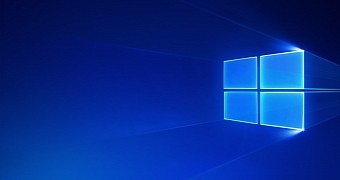One of the biggest news this week concerns the future of Windows 10, which according to one report, could come with a little surprise as soon as 2021.
By the looks of things, Microsoft wants to bring Android apps to Windows 10, essentially making it possible for users to run apps built for Google’s mobile operating system right on the desktop.
This is already possible in Windows 10 with the help of the Your Phone app and a compatible smartphone, like the Samsung Galaxy Note20 Ultra, but the software giant is ready to push things to a new level.
So what it wants to do is bundle this experience with Windows 10, thus making it possible for users to install apps from the Microsoft Store and then run them on the desktop without the need for any other application.
This is big news, there’s no doubt about it, and Microsoft is reportedly working on this capability already, with the target date for the launch set for 2021.
But there’s one big question when it comes to Android apps on Windows 10: do we really need them? Is an Android app such a must-have on a PC running Windows 10?
Yes and no.
As you can imagine, running Android apps on the desktop doesn’t make much sense for a wide variety of reasons, and one of them is because they’re built with touch input and not necessarily for mouse and keyboard input.
And yet, using them with a mouse isn’t necessarily an issue, and software like BlueStacks, which allows us to run Android apps on Windows 10, is the living proof in this regard.
But since it’s full Windows 10 we’re talking about, the app gap that Microsoft might want to resolve by bringing Android apps in the Microsoft Store doesn’t really exist. And this is because we already have pretty much any software we want on the desktop, and if something is missing, there’s a good chance we can use it in the browser.
This is the case of apps like WhatsApp and Telegram, both of which come with dedicated apps for the desktop, but at the same time, they also offer a web-based interface through the browser.
So theoretically, Android apps on a PC is a feature that’s not really something supposed to change the way we work on our computers. Pretty much because Windows 10 is supposed to boost productivity, and I’m not sure Android apps on the desktop can do this.
But then, it’s the touch experience in Windows 10 that Android apps could help. Microsoft is making a big deal about touch input in Windows 10, and the tablets that are powered by its operating system would definitely benefit from the addition of Android apps in the Microsoft Store.
This is because they’re already optimized for touch, and using them without a mouse and keyboard would thus be much easier.
But is the effort really worth it? Only Microsoft can decide here, but if there was a moment when support for Android apps was considered a life-saving update for the world of Windows, this was a few years ago when the market share of Windows phones collapsed.
Microsoft wanted to bring Android apps to Windows 10 Mobile at that point too, and the company even developed the early support to make this happen, only that the project was abandoned all of a sudden when the software giant eventually understood its mobile platform has no future.
And here we are again with Android apps coming to Windows, this time with a purpose that we’ll most likely decrypt as we get closer to their release.

 14 DAY TRIAL //
14 DAY TRIAL //